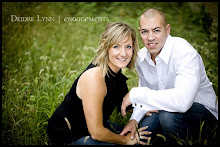
In light of the recent rash of food-borne illnesses reported to good ole' TCHD, I'd like to use this platform to speak out on proper food safety in the home. Ever think about how Aunt Fanny prepared her special meatloaf or how long the macaroni salad was sitting out at the family reunion before you dug in? Sure, "mom always did it this way," is a great excuse for leaving the turkey out on the kitchen table to thaw over night, but it's also a great way to give you and your family a gift that keeps on giving (a trip to the porcelain throne every 20 minutes).
So let's start with thawing.
If you're going to cook a big hunk of meat, thaw it one of three ways:
1. In the fridge at 41F or below.
2. Under running water (70F) for up to two hours.
3. As part of the cooking process.
What about final cooking temperatures? This ensures the bacteria, or other parasites specific to that animal are killed during the cooking process.
Poultry, Stuffed meats, and ANY reheated food: 165F
Beef, Pork, Ground meats, Game animals: 155F
Fish, Eggs: 145F
Holding Temperatures. No, a picnic basket is not a proper hot-holding unit for the commute from home to Uncle Bob's in Chicago.
Hot foods: 140F or above
Cold foods: 41F or below
Why is this important? Bacteria double in population approximately every 20 minutes. Therefore food contaminated with 100 bacteria becomes 6,400 in just over 2 hours and 25,600 in 3 hours. MMMMMM...
And last, but certainly not least, cool-down. "You mean I can't cook a 5 gallon pot of chili and just stick it in the fridge?" Remember the bacteria? If not properly cooled, those 100 bacteria will become 1,677,721,600 in just 8 hours. A hot pot of chili may take days to reach 41F in a commercial cooler. Talk about a biological weapon!
Here's what to do:
Divide the product into smaller portions (should be no deeper than 4" in a pan).
Cool the product from 140F to 70F within 2 hours. An easy way to do this is to add ice cubes (this won't destroy the product because water will be the first thing to evaporate when it is reheated). Cool from 70F to 41F within an additional 4 hours. Don't put the product into the cooler until it has reached 140F. All the excess heat will only raise the temperature of other items in the fridge! Loosely covering the product during cooling will allow heat to escape while still protecting the food from falling contaminants. Remember to reheat to 165F before consuming!
Following these basic guidelines can help ensure a happy and healthy holiday season!
I also do not recommend consuming more than 2 quarts of chili per sitting.



2 comments:
All good info. How about you coming over to thaw the turkey for Thanksgiving, cook it to the right temp, making sure it is at the right temp again to put it into the frig for leftovers (if there will be any)? I don't think any of us ever got ill with my cooking system, but I guess there could be a first time. See you soon, my little Marty Stewart.
I gotta tell you... I learned something today! Good thing nobody got seriously ill following my derby party where I made a vat of homemade burgoo the day before and stuck in the fridge.
Post a Comment